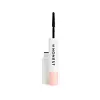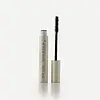What's inside
What's inside
 Key Ingredients
Key Ingredients

 Benefits
Benefits

 Concerns
Concerns

 Ingredients Side-by-side
Ingredients Side-by-side

Water
Skin ConditioningBeeswax
Emulsion StabilisingPotassium Cetyl Phosphate
EmulsifyingGlycerin
HumectantGlyceryl Stearate Se
EmulsifyingCopernicia Cerifera Wax
Castor Isostearate Beeswax Succinate
Skin ConditioningAcacia Senegal Gum
MaskingCellulose
AbsorbentGlyceryl Behenate
EmollientJojoba Esters
EmollientTocopherol
AntioxidantEthylhexylglycerin
Skin ConditioningCaprylyl Glycol
EmollientCetyl Palmitate
EmollientSorbitan Olivate
EmulsifyingSorbitan Palmitate
EmulsifyingXanthan Gum
EmulsifyingCaprylic/Capric Glycerides
EmollientSodium Benzoate
MaskingCellulose Gum
Emulsion StabilisingPotassium Sorbate
PreservativeSodium Phytate
Phosphoric Acid
BufferingCI 77499
Cosmetic ColorantGlyceryl Stearate
EmollientZea Mays Starch
AbsorbentCetearyl Alcohol
EmollientWater, Beeswax, Potassium Cetyl Phosphate, Glycerin, Glyceryl Stearate Se, Copernicia Cerifera Wax, Castor Isostearate Beeswax Succinate, Acacia Senegal Gum, Cellulose, Glyceryl Behenate, Jojoba Esters, Tocopherol, Ethylhexylglycerin, Caprylyl Glycol, Cetyl Palmitate, Sorbitan Olivate, Sorbitan Palmitate, Xanthan Gum, Caprylic/Capric Glycerides, Sodium Benzoate, Cellulose Gum, Potassium Sorbate, Sodium Phytate, Phosphoric Acid, CI 77499, Glyceryl Stearate, Zea Mays Starch, Cetearyl Alcohol
Water
Skin ConditioningCI 77499
Cosmetic ColorantJojoba Esters
EmollientPolyurethane-9
Propanediol
SolventRicinus Communis Seed Oil
MaskingHydrolyzed Corn Starch
HumectantCetearyl Olivate
Kaolin
AbrasiveAlcohol
AntimicrobialGlyceryl Stearate
EmollientSorbitan Olivate
EmulsifyingCharcoal Powder
AbrasiveCopernicia Cerifera Wax
Pentylene Glycol
Skin ConditioningRayon
Hydrogenated Olive Oil Stearyl Esters
Emulsion StabilisingGlycerin
HumectantPisum Sativum Peptide
Skin ConditioningPhenylpropanol
MaskingHydrolyzed Vegetable Protein
Skin ConditioningXanthan Gum
EmulsifyingSodium Myristoyl Glutamate
CleansingHydrogenated Castor Oil
EmollientSodium Gluconate
Skin ConditioningMethylpropanediol
SolventArginine
MaskingSodium Hydroxide
BufferingAluminum Hydroxide
EmollientTocopherol
AntioxidantSilica
AbrasiveLeuconostoc/Radish Root Ferment Filtrate
AntimicrobialCaprylyl Glycol
EmollientHelianthus Annuus Seed Oil
EmollientSodium Benzoate
MaskingWater, CI 77499, Jojoba Esters, Polyurethane-9, Propanediol, Ricinus Communis Seed Oil, Hydrolyzed Corn Starch, Cetearyl Olivate, Kaolin, Alcohol, Glyceryl Stearate, Sorbitan Olivate, Charcoal Powder, Copernicia Cerifera Wax, Pentylene Glycol, Rayon, Hydrogenated Olive Oil Stearyl Esters, Glycerin, Pisum Sativum Peptide, Phenylpropanol, Hydrolyzed Vegetable Protein, Xanthan Gum, Sodium Myristoyl Glutamate, Hydrogenated Castor Oil, Sodium Gluconate, Methylpropanediol, Arginine, Sodium Hydroxide, Aluminum Hydroxide, Tocopherol, Silica, Leuconostoc/Radish Root Ferment Filtrate, Caprylyl Glycol, Helianthus Annuus Seed Oil, Sodium Benzoate
Ingredients Explained
These ingredients are found in both products.
Ingredients higher up in an ingredient list are typically present in a larger amount.
Caprylyl Glycol is a humectant and emollient, meaning it attracts and preserves moisture.
It is a common ingredient in many products, especially those designed to hydrate skin. The primary benefits are retaining moisture, skin softening, and promoting a healthy skin barrier.
Though Caprylyl Glycol is an alcohol derived from fatty acids, it is not the kind that can dry out skin.
This ingredient is also used as a preservative to extend the life of products. It has slight antimicrobial properties.
Learn more about Caprylyl GlycolCi 77499 is also hydrated iron III oxide. It is created from mixing red and black iron oxides. This helps give shades of darkness to a product.
Iron III oxides are classified as inorganic chemicals for coloring.
Copernicia Cerifera Wax comes from a palm tree native to Brazil; another name for this ingredient is Carnauba Wax.
This ingredient is used to thicken texture and also leaves behind a film when applied.
Fun fact: This wax has the highest melting point of all natural waxes and low solubility.
Learn more about Copernicia Cerifera WaxGlycerin is already naturally found in your skin. It helps moisturize and protect your skin.
A study from 2016 found glycerin to be more effective as a humectant than AHAs and hyaluronic acid.
As a humectant, it helps the skin stay hydrated by pulling moisture to your skin. The low molecular weight of glycerin allows it to pull moisture into the deeper layers of your skin.
Hydrated skin improves your skin barrier; Your skin barrier helps protect against irritants and bacteria.
Glycerin has also been found to have antimicrobial and antiviral properties. Due to these properties, glycerin is often used in wound and burn treatments.
In cosmetics, glycerin is usually derived from plants such as soybean or palm. However, it can also be sourced from animals, such as tallow or animal fat.
This ingredient is organic, colorless, odorless, and non-toxic.
Glycerin is the name for this ingredient in American English. British English uses Glycerol/Glycerine.
Learn more about GlycerinGlyceryl Stearate is a mix of glycerin and stearic acid.
It is used to stabilize the mixing of water and oil ingredients. By preventing these ingredients from separating, it can help elongate shelf life. It can also help thicken the product's texture.
As an emollient, it helps soften skin and supports barrier-replenishing ingredients.
In cosmetics, Glyceryl Stearate is often made from vegetable oils or synthetically produced.
This ingredient may not be fungal-acne safe
Fun fact: The human body also creates Glyceryl Stearate naturally.
Learn more about Glyceryl StearateJojoba Esters is a wax created from Jojoba oil. It is an emollient and film-forming ingredient. In bead form, it is an exfoliator.
This ingredient has high oxidative stability, meaning it doesn't break down when exposed to oxygen.
Its similarity to our skin's natural oils makes it a great emollient. Emollients help soften and soothe our skin by creating a barrier on top. This barrier helps trap moisture in, keeping skin hydrated.
It is created using either the hydrogenation or transesterification processes on jojoba oil.
Learn more about Jojoba EstersSodium Benzoate is a preservative. It's used in both cosmetic and food products to inhibit the growth of mold and bacteria. It is typically produced synthetically.
Both the US FDA and EU Health Committee have approved the use of sodium benzoate. In the US, levels of 0.1% (of the total product) are allowed.
Sodium benzoate works as a preservative by inhibiting the growth of bacteria inside of cells. It prevents the cell from fermenting a type of sugar using an enzyme called phosphofructokinase.
It is the salt of benzoic acid. Foods containing sodium benzoate include soda, salad dressings, condiments, fruit juices, wines, and snack foods.
Studies for using ascorbic acid and sodium benzoate in cosmetics are lacking, especially in skincare routines with multiple steps.
We always recommend speaking with a professional, such as a dermatologist, if you have any concerns.
Learn more about Sodium BenzoateSorbitan Olivate is created from the fatty acids in olive oil and sorbitol.
This ingredient is an oil in water emulsifier. It helps stabilize a product by preventing oils and waters from separating. Sorbitan Olivate also helps hydrate the skin.
Manufacturers sell sorbitan olivate under the name OliveM 1000. OliveM 1000 a multifunctional ingredient. It is self-emulsifying. According to a manufacturer, OliveM 1000 does not disrupt natural skin biome.
Due to its olive oil base, this ingredient may not be fungal-acne safe.
Learn more about Sorbitan OlivateTocopherol (also known as Vitamin E) is a common antioxidant used to help protect the skin from free-radicals and strengthen the skin barrier. It's also fat soluble - this means our skin is great at absorbing it.
Vitamin E also helps keep your natural skin lipids healthy. Your lipid skin barrier naturally consists of lipids, ceramides, and fatty acids. Vitamin E offers extra protection for your skin’s lipid barrier, keeping your skin healthy and nourished.
Another benefit is a bit of UV protection. Vitamin E helps reduce the damage caused by UVB rays. (It should not replace your sunscreen). Combining it with Vitamin C can decrease sunburned cells and hyperpigmentation after UV exposure.
You might have noticed Vitamin E + C often paired together. This is because it is great at stabilizing Vitamin C. Using the two together helps increase the effectiveness of both ingredients.
There are often claims that Vitamin E can reduce/prevent scarring, but these claims haven't been confirmed by scientific research.
Learn more about TocopherolWater. It's the most common cosmetic ingredient of all. You'll usually see it at the top of ingredient lists, meaning that it makes up the largest part of the product.
So why is it so popular? Water most often acts as a solvent - this means that it helps dissolve other ingredients into the formulation.
You'll also recognize water as that liquid we all need to stay alive. If you see this, drink a glass of water. Stay hydrated!
Learn more about WaterXanthan gum is used as a stabilizer and thickener within cosmetic products. It helps give products a sticky, thick feeling - preventing them from being too runny.
On the technical side of things, xanthan gum is a polysaccharide - a combination consisting of multiple sugar molecules bonded together.
Xanthan gum is a pretty common and great ingredient. It is a natural, non-toxic, non-irritating ingredient that is also commonly used in food products.
Learn more about Xanthan Gum